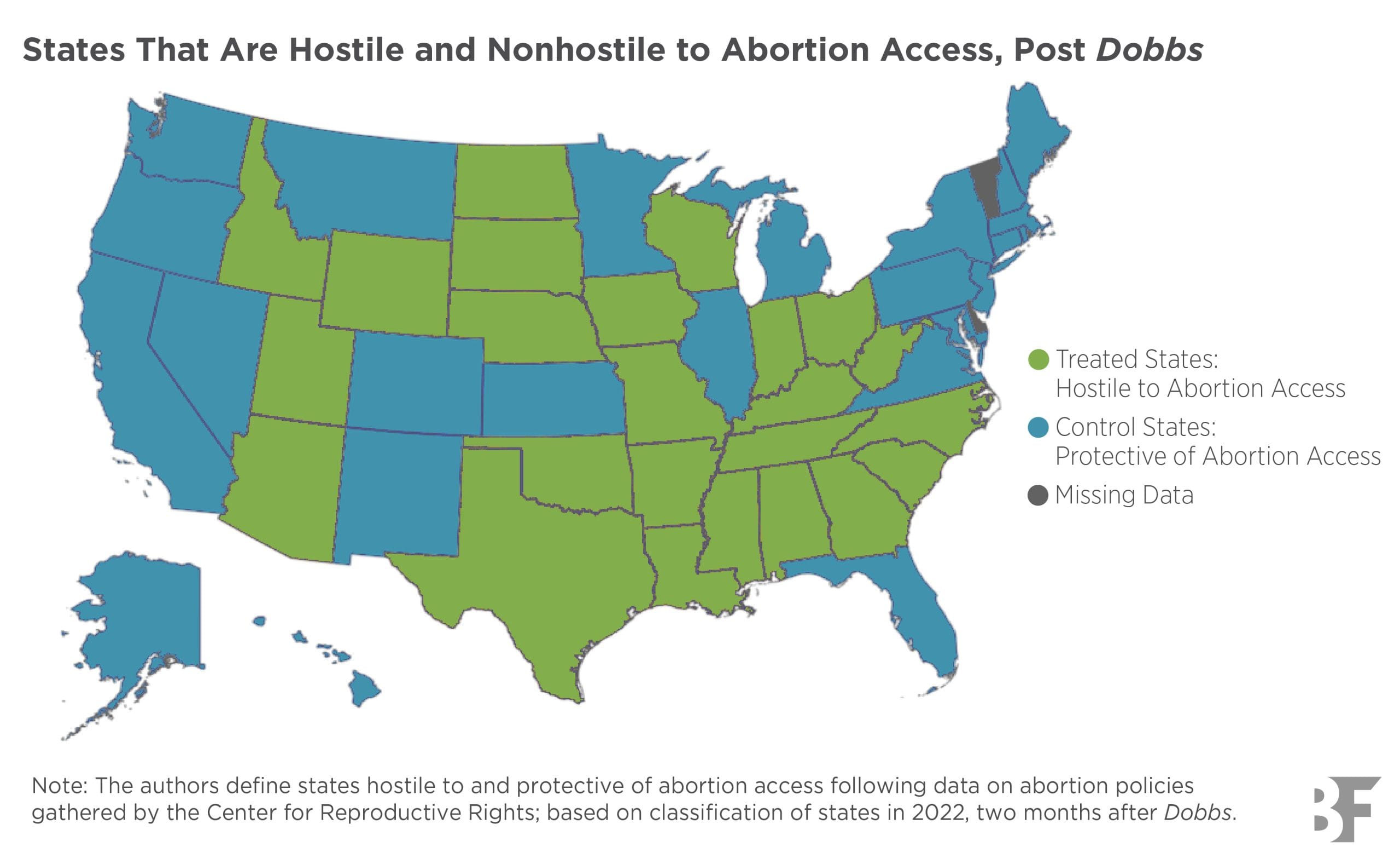When the Supreme Court issued its decision in Dobbs v. Jackson Women’s Health Organization (2022), reversing 1973’s Roe v. Wade that established federal abortion protections on contraceptive and sterilization decisions, one prominent question was how this would affect the behavior of residents living in states that are characterized as hostile (for example, 13 states had enacted trigger laws to ban or restrict abortion immediately if Roe were overturned) or non-hostile to abortion. Would people in various states alter their use of short-acting and long-acting reversible contraceptives (SARC and LARC), or opt for sterilization?

The authors study a longitudinal dataset covering inpatient and outpatient procedures, and prescription drug claims from May 1, 2021, to December 31, 2023. These data allow for the creation of a balanced panel of individuals enrolled in employer-sponsored health insurance. Broadly representative of the privately insured U.S. population, these data also allow the authors to analyze demographic patterns in contraceptive and sterilization responses, including pre-Dobbs behavior. The authors find the following:
- States hostile to abortion diverge from others in July 2022, immediately after the Dobbs decision. Both women and men are more likely to undergo sterilization procedures and women are more likely to initiate LARC use.
- These differences are short-lived. By September 2022, female sterilization procedures and LARC initiation converge to their pre-Dobbs differences across States. The effect on male sterilization fades by the end of the year.
- However, there is one age subgroup in which effects do not fade: Young women (18-25) are more than 80% more likely to undergo sterilization procedures in 2023 as in 2021 in states hostile to abortion relative to other states. Young men are 40% more likely to undergo sterilization even more than one year after the initial ruling.
- For women, the effect on sterilizations is driven completely by women who were previously using SARCs, suggesting that these women were sexually active and may intend to avoid unplanned pregnancy.
- Finally, the increase in sterilizations is largest among women with no child on their health plan.
States hostile to abortion diverge from others in July 2022, immediately after the Dobbs decision. Both women and men are more likely to undergo sterilization procedures.
This work contributes to the existing literature on this topic through its analysis of a privately insured, nationwide population, its findings regarding differences between short-term and long-term responses, and its discussion of such characteristics as age, past birth control use, and presence of children, tying treatment effects to the likelihood of unplanned pregnancy and future fertility.












